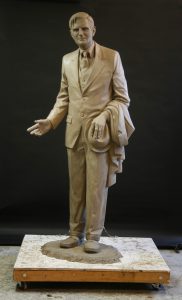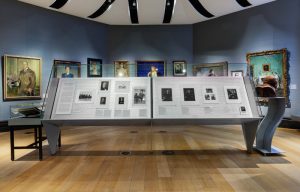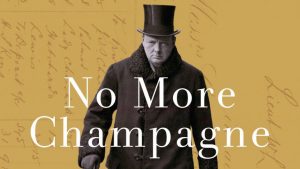
Bulletin #91 – Jan 2016
Churchill & Lawrence of Arabia
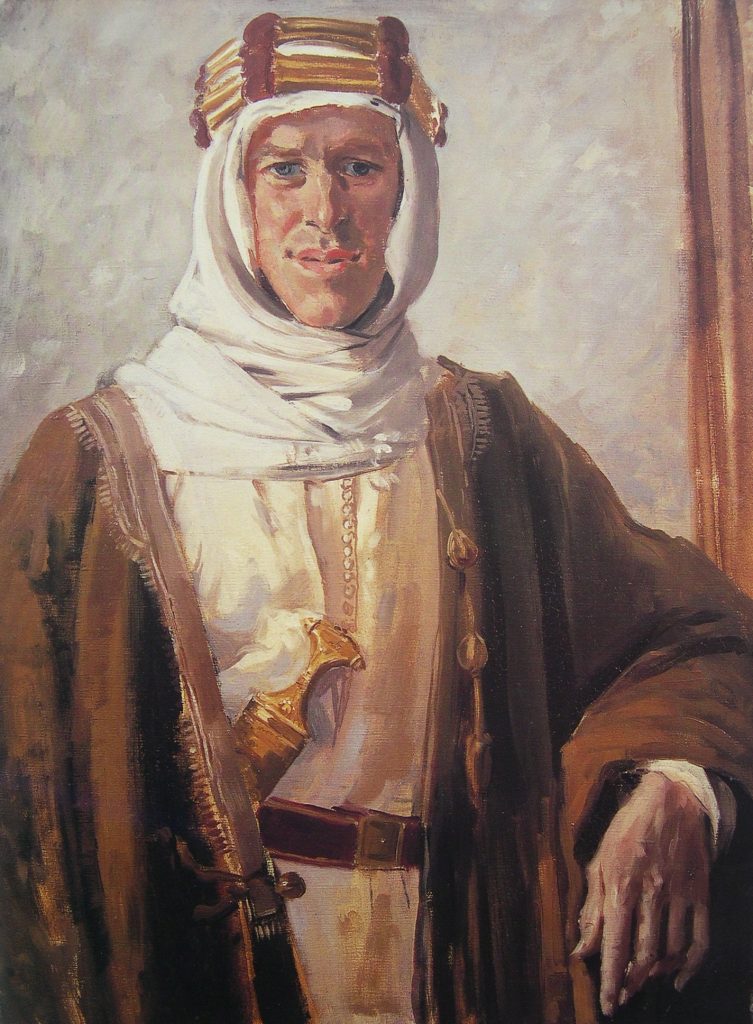
December 18, 2015
New Book Collects Letters between Churchill and T. E. Lawrence;
Interview with Editor JEREMY WILSON
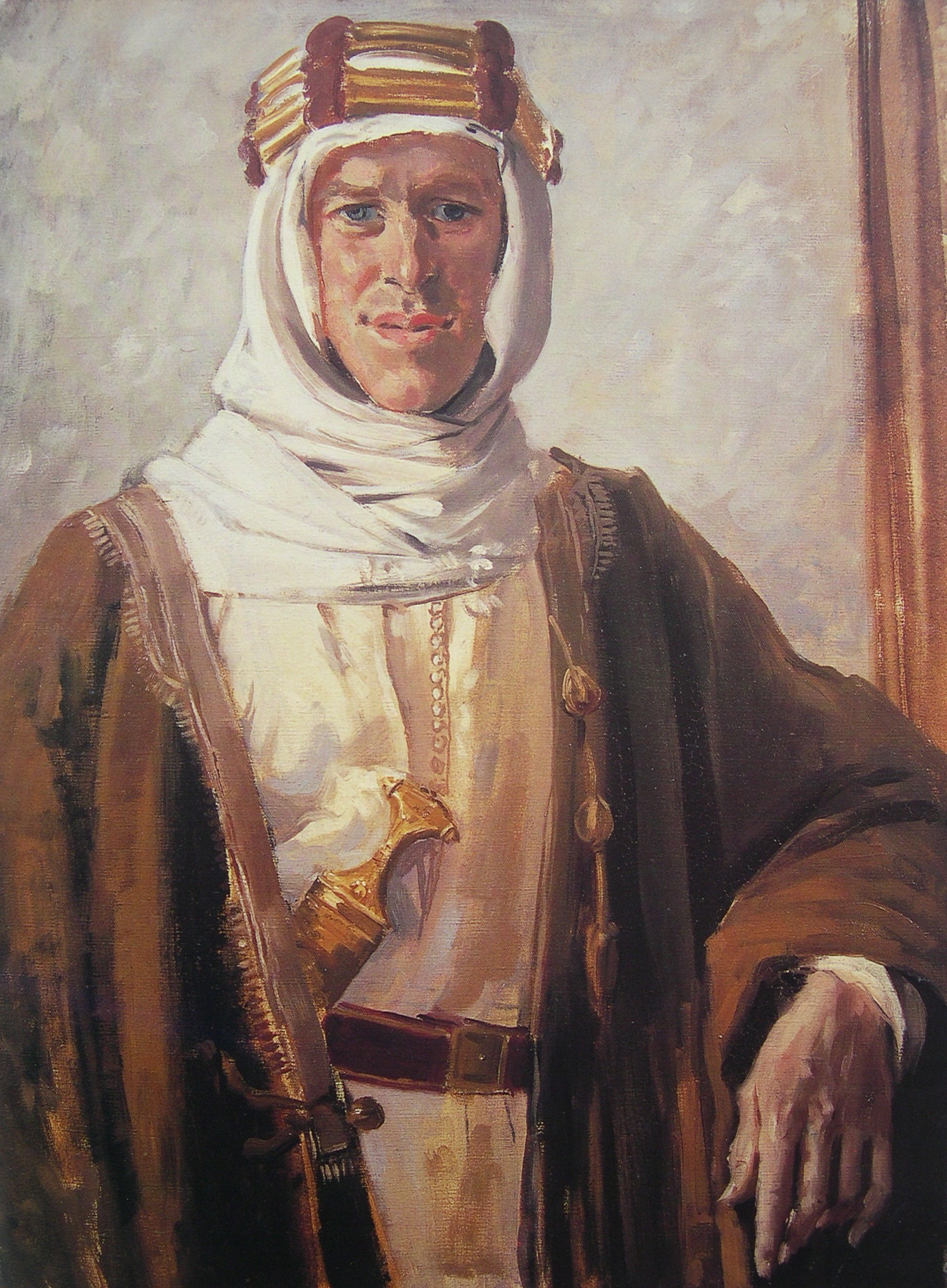
Jeremy Wilson is the authorised biographer of T. E. Lawrence. Together with his wife, he has been editing and publishing the Lawrence correspondence. The newest volume includes the letters between Lawrence and Winston Churchill from the time Lawrence left the Colonial Office until his death. Wilson recently discussed with the Chartwell Bulletin how he came by the job and what he has learned.
CB: You are the authorised biographer of T. E. Lawrence. How did you come to receive this assignment?
JW: I was doing postgraduate research on European diplomacy between the two world wars while collecting T. E. Lawrence books as a hobby. In the summer of 1968 I volunteered to make a handlist of the Lawrence papers embargoed in the Bodleian Library until 2000. My access to that archive led A. W. Lawrence (TEL’s younger brother and literary executor) to ask if I would write a historical introduction to Lawrence’s commonplace-book Minorities [1971/2]. After that, the publishers of Minorities suggested I should tackle Lawrence’s authorised biography. In other words, it just happened.

2024 International Churchill Conference
CB: How many books have you written about Lawrence?
JW: The authorised biography [1989/90] runs to 1,200 pages, which seemed like writing several books. That is partly because TEL’s career went through such different stages: archaeology, guerrilla warfare, diplomacy, writing, and so on. In 1988 the National Portrait Gallery put on a centenary exhibition. I did a lot of work on the catalogue, which became an illustrated companion to the biography. Since 1997 my wife and I have been editing an edition of Lawrence’s works and correspondence, published for subscribers.
CB: How did the editing commission come about, and how many volumes do you expect there will be altogether?
JW: Back in 1968 when I listed the TEL papers in the Bodleian, I read all the letter transcripts collected after TEL’s death for David Garnett’s Letters of T. E. Lawrence [1938]. Unlike Garnett’s general selection, the transcripts are arranged by correspondent. I found them fascinating, not just because there were so many letters Garnett had not used, but because each correspondence was so different—reflecting TEL’s relationship with that particular person. Hence the principle of our edition—to focus on individual relationships, or sometimes on specific activities.
But all my efforts to find a publisher failed, until in 1988 I was asked by The Whittington Press to edit Lawrence’s Letters to E. T. Leeds—a single-person correspondence. Their limited fine-press edition sold well, and left me thinking, “we could do this with more of the letters.” So in 2000 we began. Frankly, it was an experiment: I did not know then and cannot say now how many volumes there will be. The edition has no external funding so its future depends to a large extent on the subscribers. That said, the volume we have just finished, which includes Lawrence’s correspondence with Churchill and Edward Marsh from 1922 to 1935, will be the tenth volume of letters—in addition to seven editions of Lawrence’s works.
CB: Where are the Lawrence papers located, and how have you gone about gathering material located in other archives?
JW: Lawrence like Churchill is widely collected, so there are original letters in many locations including private collections and small libraries. In the US there are important collections at Harvard, the Harry Ransom Center in Texas, and the Huntington Library in California. In the UK there is material in several Oxford University collections, notably the Bodleian. Likewise, there is material in the British Library, The National Archives, and other places around London.
I started locating Lawrence’s letters and gathering copies in the 1960s. That gathered pace while I was researching the biography. So by the time we began editing the letters for publication we already had copies of several thousand and knew where there were more.
CB: What have you learned about the relationship between Lawrence and Churchill?
JW: Each time we tackle one of these volumes the focus shifts, and we start seeing things we had not noticed before. That was particularly true for Churchill, because the Churchill papers including Lawrence’s letters were closed while I was researching the biography.
I had not expected their friendship, after 1922 when Lawrence left the Colonial Office, to continue and, I think, deepen in the way it did. Lawrence had turned his back on Middle East Politics and did not wish to talk about it. Not long afterwards Churchill left the Colonial Office. So the reason they had worked together had gone. But then they began to exchange letters about each other’s books, and their friendship developed.
One thing that is clear from the letters is the very real admiration on both sides. Moreover, each felt the other had the capacity for greater things. Lawrence wanted Churchill one day to be Prime Minister. Churchill saw Lawrence’s post-war years in the ranks as a temporary stage, to recover from what we might now call PTSD. What is striking in this volume is that by 1935 Lawrence’s political friends thought he was through that stage, and wanted him to take on more important work. Then Lawrence suddenly died after a motor-cycling accident. Without that, I am sure it would have happened.
CB: In addition to correspondence between Lawrence and Churchill, this latest volume in the series includes the correspondence that Lawrence had with Churchill’s private secretary Sir Edward Marsh. What was the relationship there, and what do their letters concern?
JW: Having worked for Churchill at the Colonial Office, Lawrence knew Marsh well. I think in the years after 1922 he continued what was probably a Colonial Office habit: sending things to Marsh, knowing that Marsh would show them to Churchill, in whole or in part, at a convenient moment. So really the correspondence up to 1929 forms a single series. But Lawrence and Marsh also got along well because they had literary interests in common. It was Marsh who introduced Lawrence to contemporary writers such as Siegfried Sassoon.
CB: What are the most popular misconceptions people have about Lawrence?
JW: I do not think “misconceptions” is quite the right word. Most people first encounter Lawrence through David Lean’s film. They probably are not that interested in guerrilla warfare or the Middle East, so the following week they watch something else. Those that dig further, though, often find that the period in Lawrence’s life that fascinates is not the war, but what happened afterwards. If you count his war service as one of his greatest achievements, then four further achievements followed after 1919: his work for Churchill and the Cairo Conference settlement; writing Seven Pillars of Wisdom (not many people write a world classic); his translation of Homer’s Odyssey (in print since its first publication in 1932), and his work developing RAF rescue boats in the 1930s. You could add another achievement: the quality of the letters he exchanged with an amazing range of his contemporaries.
CB: What have you learned about Lawrence that you would like most people to know?
JW: Interest in Lawrence is a perpetual adventure. His career and letters keep taking you to new and different people, new and different topics. It is like a magic doorway: go through and you can follow paths to the contemporary worlds of politics, literature, art, music, publishing, archaeology, fine-printing, speed-boat design—the list goes on and on. Follow the paths that interest you, and, as I used to promise my research assistants, you will never be bored!
CB: How can people order copies of the newest volume or subscribe to the entire series? Are earlier volumes still available for purchase?
JW: As with other small fine-press publishers, most of our books go direct to private subscribers and libraries in Britain and overseas. The best time to subscribe is before publication. After that we have to increase the price because library agents need discounts. This said, for new direct subscribers buying both current and earlier volumes there are special “catch-up” prices. In real terms (adjusted for inflation) those are not much higher than the original subscription.
All the Letters series volumes are available, as are most of the works—but as stocks dwindle, we try to reserve copies of past titles for future “catch-up” subscribers. It may seem odd to hold back books we could sell, but without regular subscribers the edition could not happen. So our subscribers deserve priority.
To find out more, please visit their website.
Subscribe
WANT MORE?
Get the Churchill Bulletin delivered to your inbox once a month.
